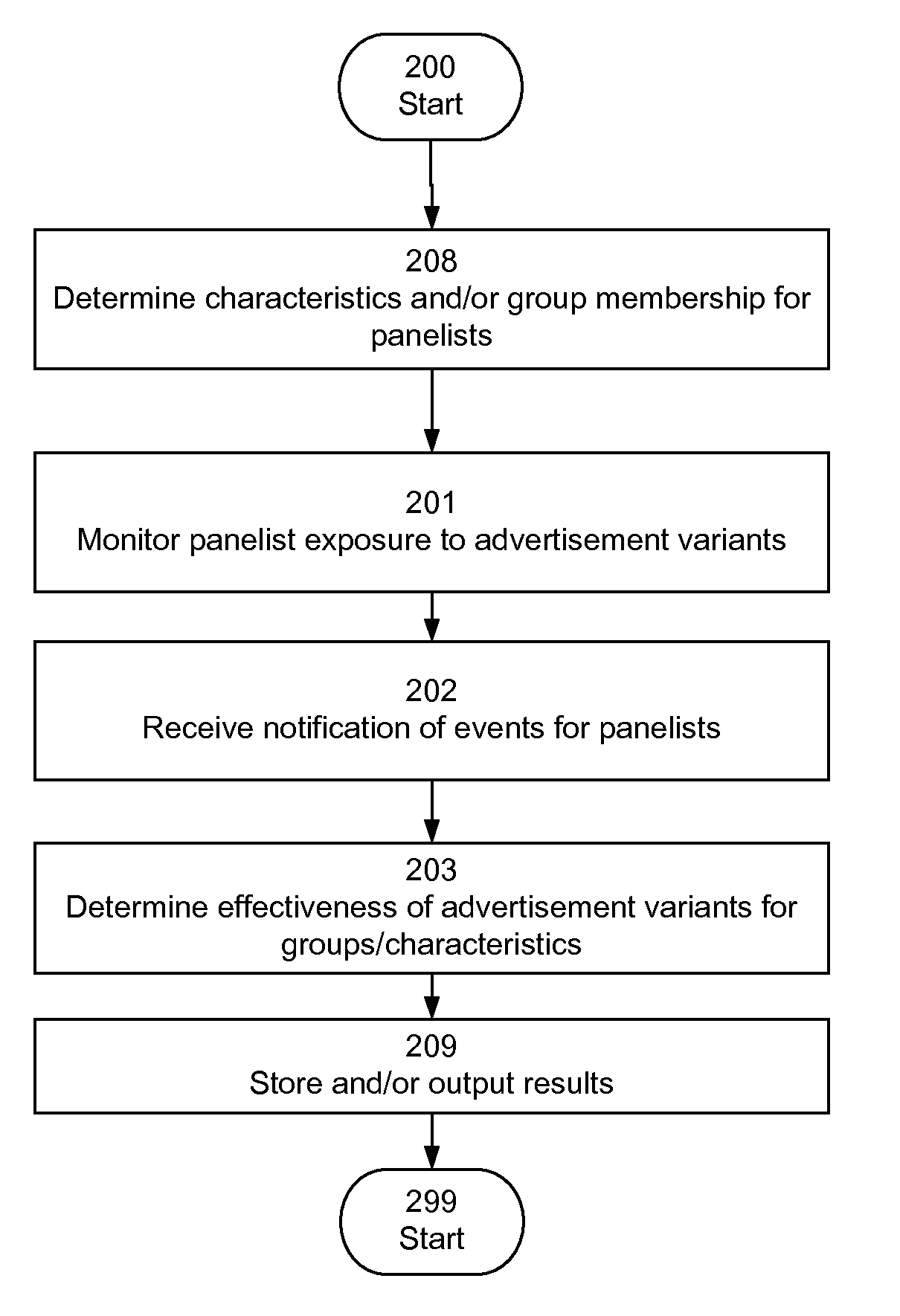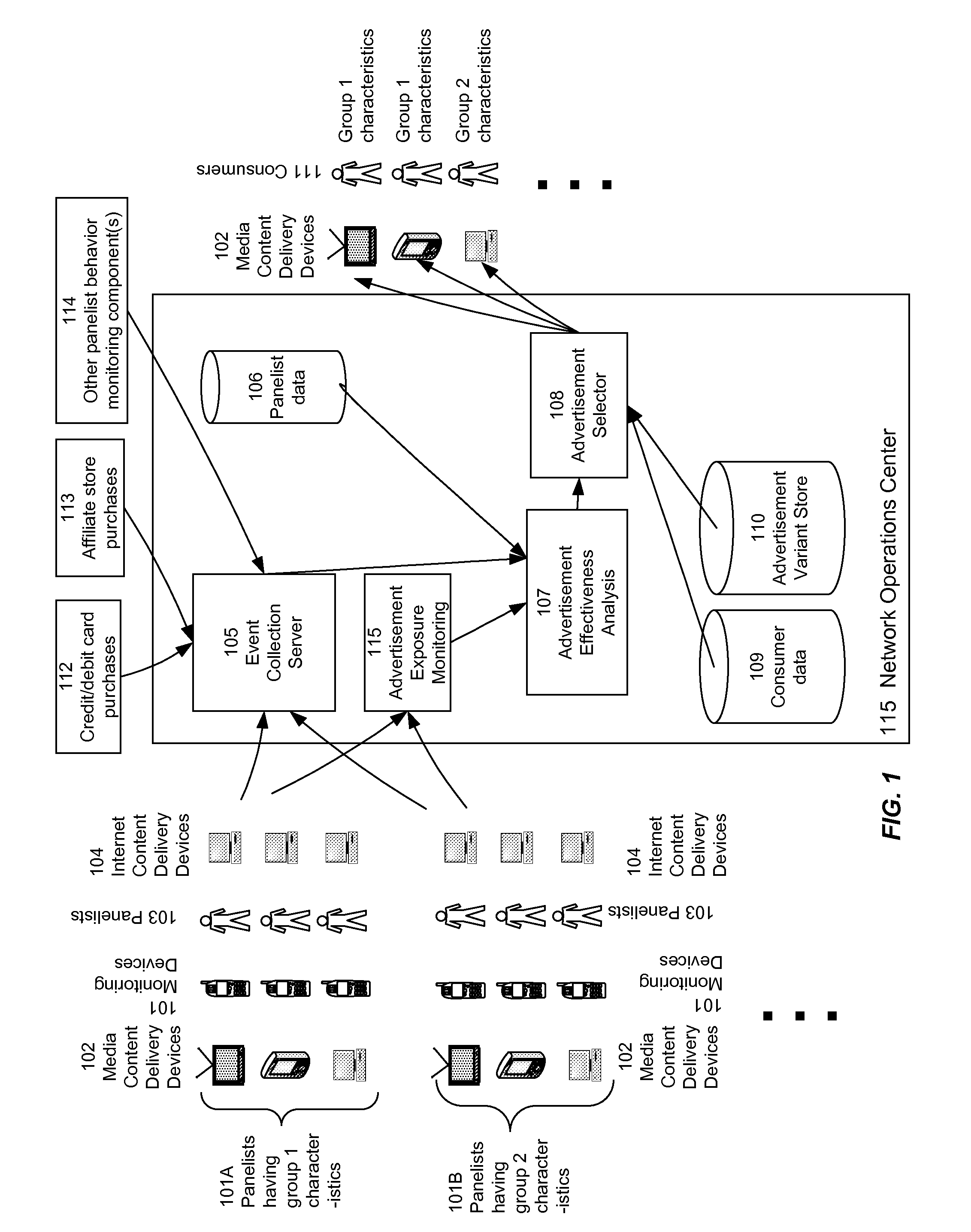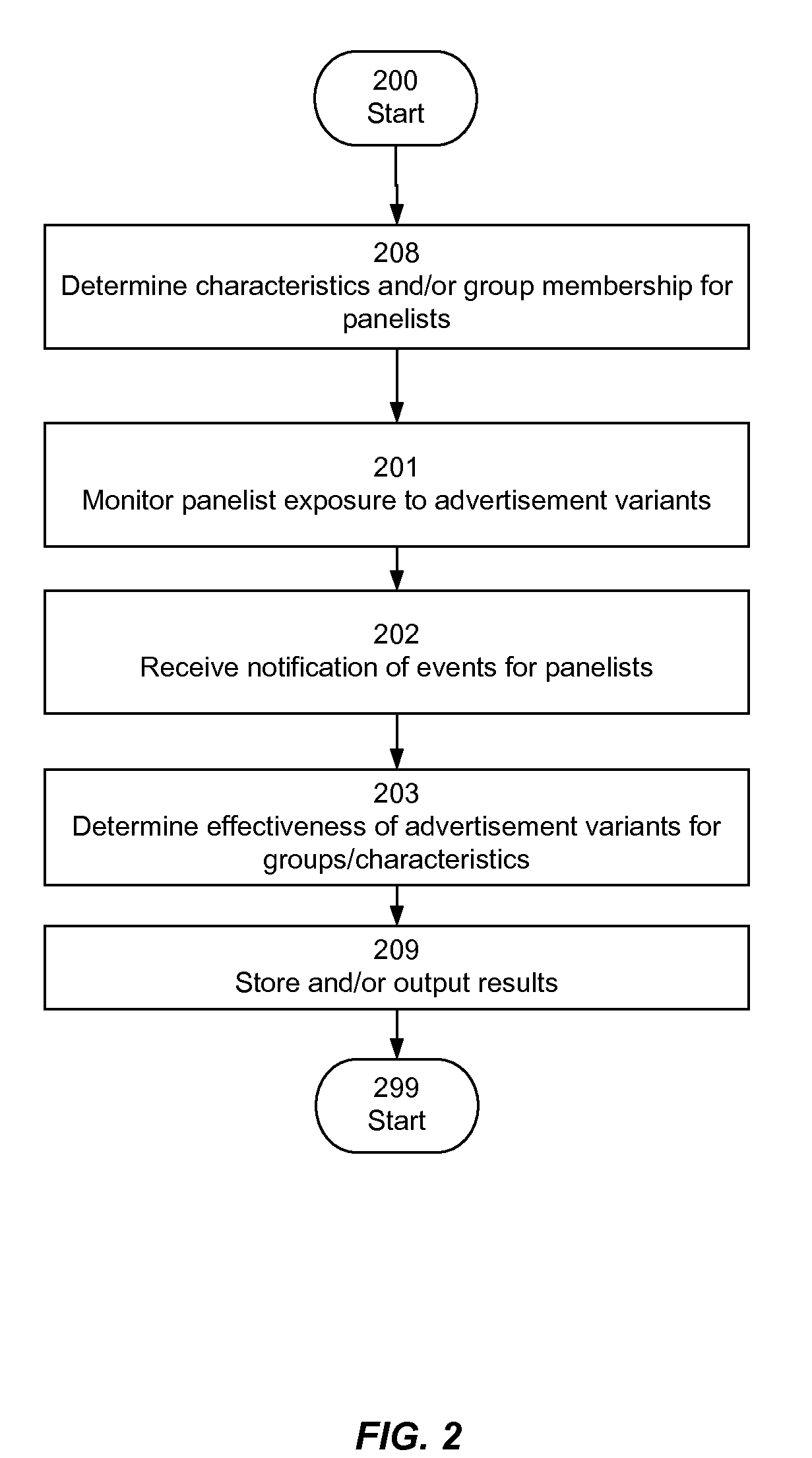Determining Relative Effectiveness Of Media Content Items
a technology of relative effectiveness and media content, applied in the field of content delivery, can solve the problems of difficult to determine the relative effectiveness of specific advertisements (or variants) played simultaneously within or among multiple groups, difficult to measure the aggregate website visits, and difficult to achieve the effect of maximizing effectiveness, high adaptability and responsiveness, and improving the overall effectiveness of advertising campaigns
- Summary
- Abstract
- Description
- Claims
- Application Information
AI Technical Summary
Benefits of technology
Problems solved by technology
Method used
Image
Examples
Embodiment Construction
[0024]For purposes of the following description, the term “consumer” refers to any user, individual, viewer, visitor, or other individual or entity to whom content can be presented. The specific use of the term “consumer” is not intended to be limiting in any way. The term “panelist” refers to any user, individual, viewer, visitor, or other individual or entity whose exposure to content is being monitored. As discussed in more detail below, the system of the present invention can detect events associated with panelists, including for example actions performed by panelists, so as to determine the effectiveness of content presented to those panelists. As discussed below, in various embodiments, panelists can be selected to be representative of a larger population of individuals. Various mechanisms exist for selecting panelists, including random selection, self-selection, or the like.
[0025]For illustrative purposes, the invention is described in the context of analyzing effectiveness o...
PUM
 Login to View More
Login to View More Abstract
Description
Claims
Application Information
 Login to View More
Login to View More - R&D
- Intellectual Property
- Life Sciences
- Materials
- Tech Scout
- Unparalleled Data Quality
- Higher Quality Content
- 60% Fewer Hallucinations
Browse by: Latest US Patents, China's latest patents, Technical Efficacy Thesaurus, Application Domain, Technology Topic, Popular Technical Reports.
© 2025 PatSnap. All rights reserved.Legal|Privacy policy|Modern Slavery Act Transparency Statement|Sitemap|About US| Contact US: help@patsnap.com



